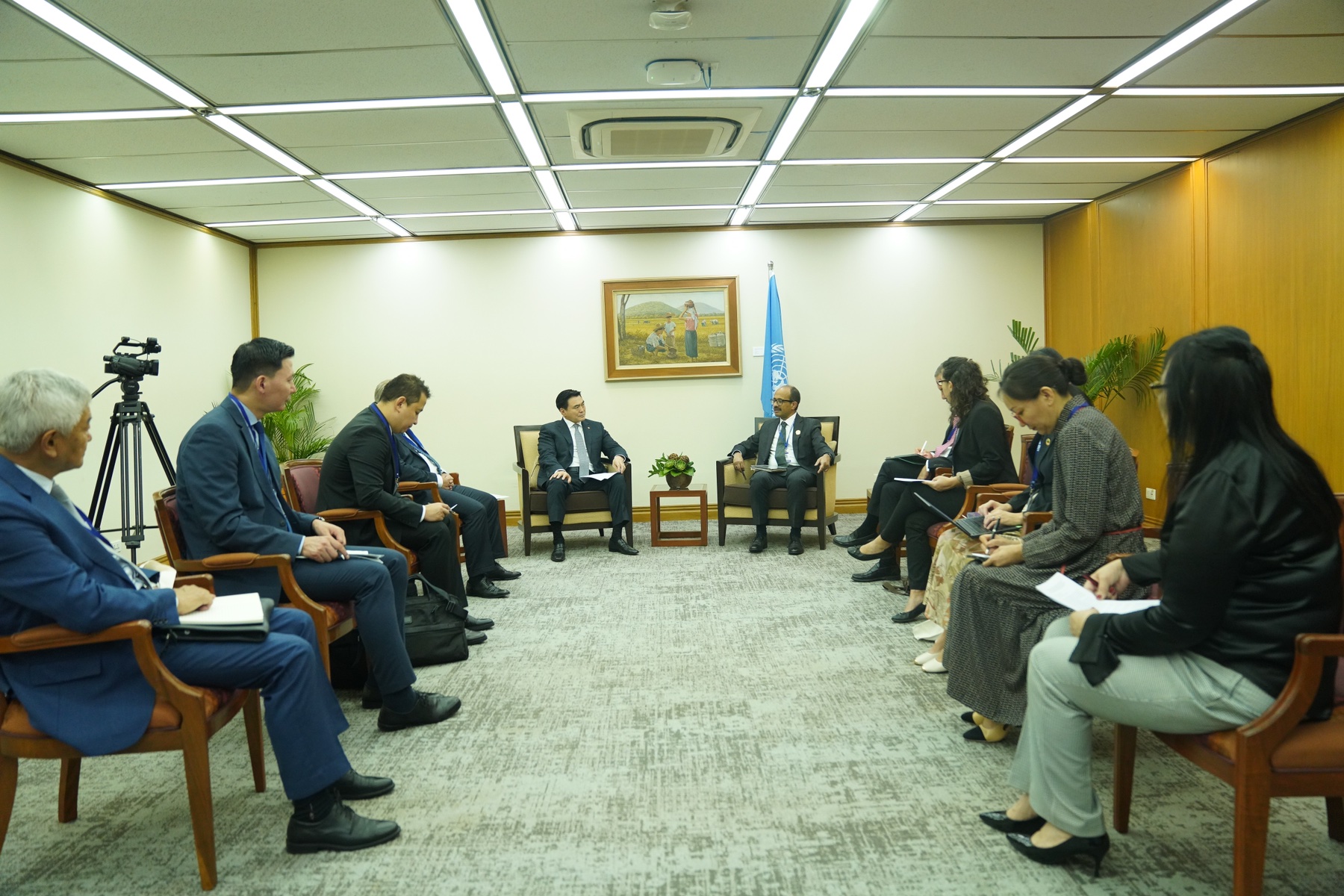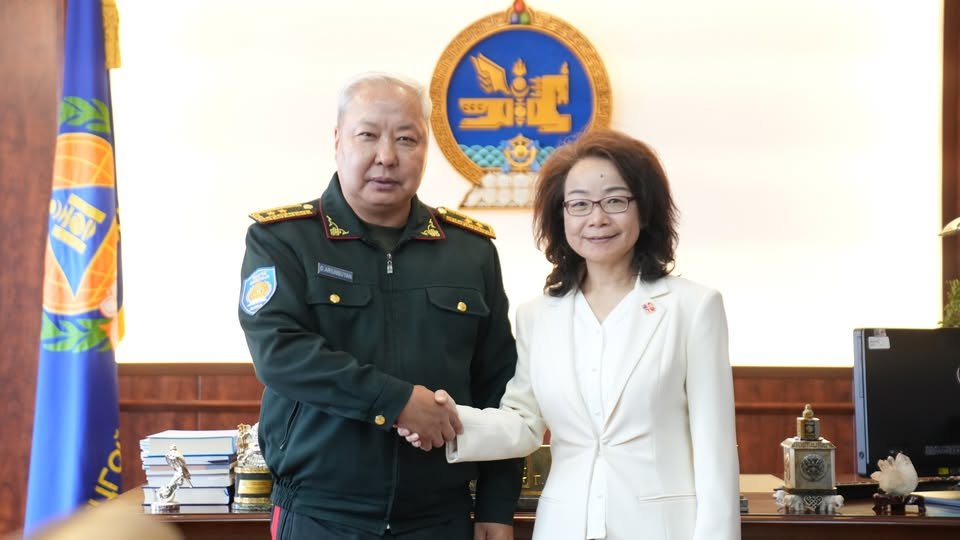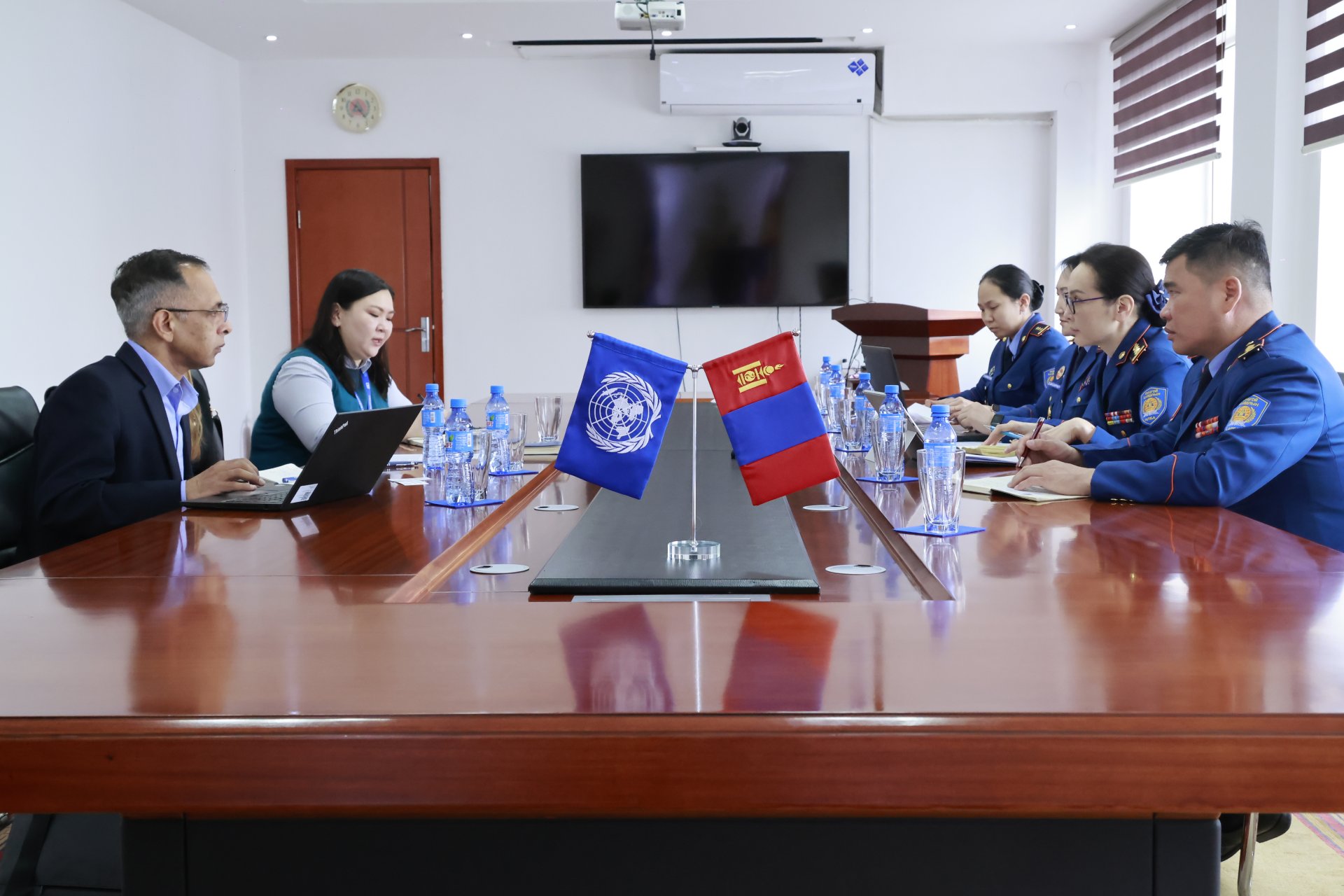An official meeting with kamal kishore, special representative for the united nations secretary-general for disaster risk reduction
The Asia-Pacific Ministerial Conference on Disasters started today, October 14, 2024, in Manila, the capital of the Republic of the Philippines. The conference, which is held every two years, is taking place under the theme "Disaster Risk Reduction and Increasing Initiatives in Asia and the Pacific until 2030.
"During the conference, the Deputy Prime Minister of Mongolia S. Amarsaikhan had an official meeting with Kamal Kishore, a Special Representative of the UN Disaster Risk Reduction and Management Office.
During the meeting, Deputy Prime Minister S. Amarsaikhan provided an update on the actions taken by the Government of Mongolia to coordinate the implementation of the "Sendai Action Framework". There was also a discussion regarding collaborating with regional countries and international organizations in the disaster reduction field. Additionally, Kamal Kishore, Special Representative of the United Nations Disaster Risk Reduction Office, was invited to participate in the sub-regional meeting on Disaster Risk Reduction scheduled to take place in Mongolia in 2025.

Kamal Kishore, Special Representative of the UN Disaster Risk Reduction and Management Office, noted that the UN will support the policies and measures implemented by the Government of Mongolia to overcome the difficulties of climate change, weather, and drought and reduce potential damages.
At the meeting, the parties also exchanged views on establishing a regional center for rapid disaster management in collaboration with the United Nations Disaster Risk Reduction Agency and establishing a cooperation platform for the East-North Asia region.
Copy all texts of this article
Download all images of this article
Other news

2024/10/16
Recent NewsExchange of views on bilateral cooperation
Ambassador Shen Minjuan emphasized her commitment to prioritizing and further enhancing cooperation between the two countries in the field of disaster prevention and protection.

2024/10/16
Recent NewsKey topics included setting a date for the event and finalizing the detailed organizational plan
Ulaanbaatar, May 15, 2025 – Colonel Ts. Uranchimeg, Deputy Chief of the National Emergency Management Agency (NEMA) of Mongolia, held a meeting today with Ms. Matilda Dimovska, Resident Representative of the United Nations Development Programme (UNDP) in Mongolia.

2024/10/16
Recent NewsKey topics included setting a date for the event and finalizing the detailed organizational plan
Ulaanbaatar, May 15, 2025 – Colonel Ts. Uranchimeg, Deputy Chief of the National Emergency Management Agency (NEMA) of Mongolia, held a meeting today with Ms. Matilda Dimovska, Resident Representative of the United Nations Development Programme (UNDP) in Mongolia.







